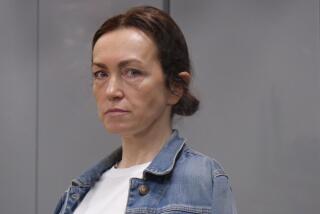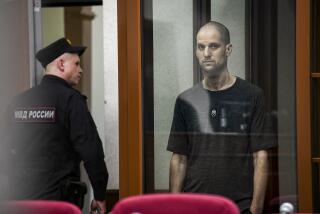Writing Was on the Moskva Hotel Wall
- Share via
News that the historic Moskva Hotel closed its doors last week, ahead of its demolition in September, brought back a fond and telling memory.
I arrived in Moscow in September 1964 as incoming bureau chief of the now-defunct New York Herald Tribune. My first big story, about three weeks after I was accredited, was the coup that drove the Communist Party leader and premier, Nikita S. Khrushchev, out of office as a “hare-brained schemer.”
It happened while Khrushchev was on vacation in the Crimea and while the city of Moscow was preparing to greet two cosmonauts who had returned to Earth from the world’s first two-man space flight the day before. Khrushchev was expected to greet them personally.
I had made a tour of the city to gather information about the coming celebration. As I returned to my office, I ran into a Russian journalist named Victor Louis who worked for a British tabloid and who was well known as a KGB operative.
“Have you heard the news?” Louis asked me. “Nikita Sergeyevich has been replaced.”
“Victor, that’s not possible,” I said. “I just went by the Moskva Hotel, and a portrait of him rising out of a cornfield is nine stories high on the front facade of the building. He is waving to the cosmonauts and smiling.”
“If you go back there,” Louis said, “you will see that the portrait is gone.”
I did, and he was right. In the 45 minutes between my two visits the portrait had disappeared. But there was no official announcement, and the Western news media played it safe until midnight, when the Tass news agency carried the news of Khrushchev’s ouster in a two-paragraph story announcing his resignation and replacement by Leonid Brezhnev as Communist Party leader and Alexei Kosygin as premier.
In the hours before the announcement, I checked Louis’ story with several American Embassy diplomats who told me they did not believe the “rumor,” that Khrushchev was too well entrenched as first secretary of the Communist Party of the Soviet Union.
The lessons were numerous: not only about how autocrats could be replaced but also about the failures of American intelligence-gatherers (and that’s what diplomats are in tightly controlled countries) and about the power of symbols.
Today, the symbolism is still there. A BMW now occupies the same space that Khrushchev’s portrait did. (On other buildings in Moscow these days, the Marlboro Man stands as tall.)
As for the failures of American intelligence, I can’t help but remember the facade of the Moskva Hotel when I think about the missing weapons of mass destruction, the whereabouts of Osama bin Laden and Saddam Hussein, and the dysfunction of Liberia.
The memory of the Moskva facade will live on long after the hotel it fronted for is razed.
Stuart H. Loory teaches at the University of Missouri School of Journalism. He was the last Moscow bureau chief for the New York Herald Tribune and the first for CNN.
More to Read
Sign up for Essential California
The most important California stories and recommendations in your inbox every morning.
You may occasionally receive promotional content from the Los Angeles Times.










